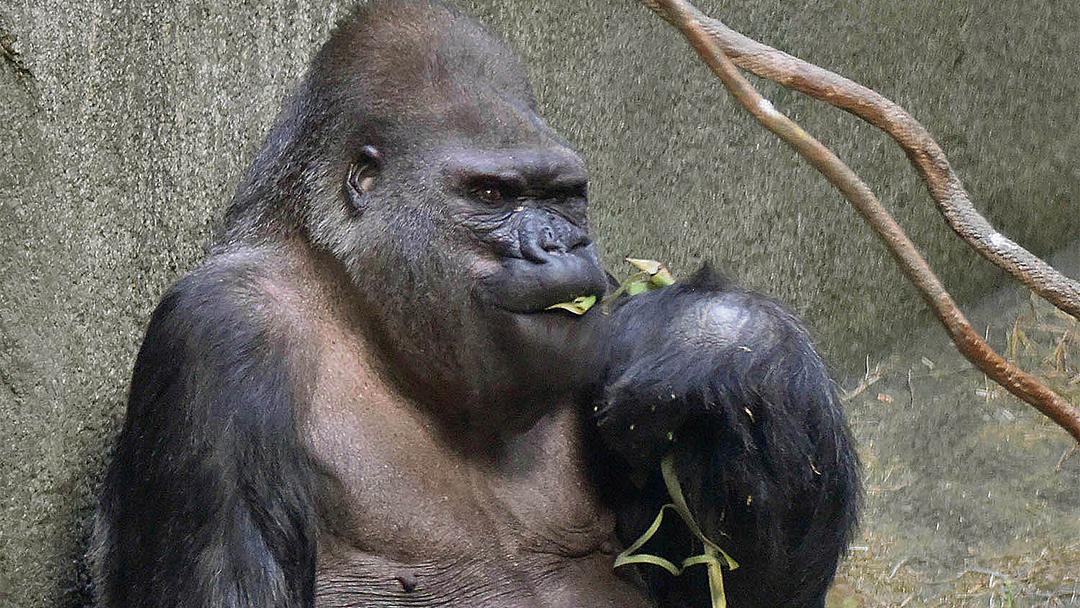

Photomicrographs showing SMI-34-ir neurons ( M,N), neuropil threads ( M–O), and clusters of swollen dystrophic neurites (O) found in the human AD cortex. Dystrophic profiles were not found in the dentate gyrus of a 42-year-old male gorilla (J). I–L: Images exhibiting the presence of swollen SMI-34-ir dystrophic neurites in the molecular layer of the dentate gyrus (I), subiculum (K) as well as SMI-34-ir cells in the subiculum (L) in a 55-year-old gorilla. Inset shows a detail of the neuron shown in panel H (arrow). H: Image of the dentate gyrus and hilar portion of the CA3 hippocampal field illustrating SMI-34-ir neurites and cells in a 55-year-old gorilla.


Note the absence of SMI-34 dystrophic processes or cells in a 42-year-old male gorilla, whereas SMI-34-ir cells (with NFT-like appearance) (C–E) and swollen dystrophic neurites (F,G) were found in the cortex of the 55-year-old female gorilla. Inset shows a high-power image of the SMI-34 neuron shown in panel B (arrow). That’s when all male gorillas develop their characteristic silver-grey fur.Photomicrographs showing SMI-34-ir neurites ( A,B,F,G) and cells ( C–E) found in the frontal cortex of a 42-year-old male (A) and a 55-year-old female (B–G) gorilla. Their weight doubles between the ages of twelve and eighteen. They only finish maturing, however, by the time they are about eighteen. Males become sexually mature relatively young. After that they must abide by all the rules and the hierarchy in the group. The white tuft means something like: “I’m young so I can still do whatever I please.” The white tuft disappears when gorillas reach puberty, by age five or six. This tuft is a clear signal to the other members of the group to treat the young gorilla kindly. During the first years of their life, you can recognise gorilla young by the tuft of white hair on their buttocks. Young gorillas suckle milk from their mother for four or five years. Mothers initially carry their infants on their belly and later on their back or on an arm or leg. Gorilla babies hold on tightly to their mother’s fur using their hands and feet. The newly born infant is very small and only weighs two kilos. The new mother then rests for a few hours and goes out with the group again the very next day. They have their first baby when they are about ten. This sound is amplified by the hollow space in its chest and can be heard as far as two kilometres away! By the way, gorillas beat their chests for other reasons too, for example when they want to play, challenge each other or boast.įemale gorillas become fertile when they are about eight years old. He then runs towards the other animal, tearing up bushes and trees on the way to demonstrate his strength and then does a drum roll by beating his chest with his flat hands. Which he might do to intimidate another silverback. It’s especially impressive to see a silverback beating his chest. But sometimes he hits a female to correct her. If the females are at odds with each other, he usually lets them sort it out themselves. Sometimes the silverback must act, though. All he has to do to control the group is adopt a certain posture, or look directly at another individual. Often the silverback doesn’t even need this type of communication. They do this, for example, when they lose sight of each other, or feel threatened or get into an argument. But gorillas are also capable of screaming and roaring loudly. They often produce a soft, humming sound which tells other individuals that they are contented. Gorillas are very quiet and friendly animals.


 0 kommentar(er)
0 kommentar(er)
